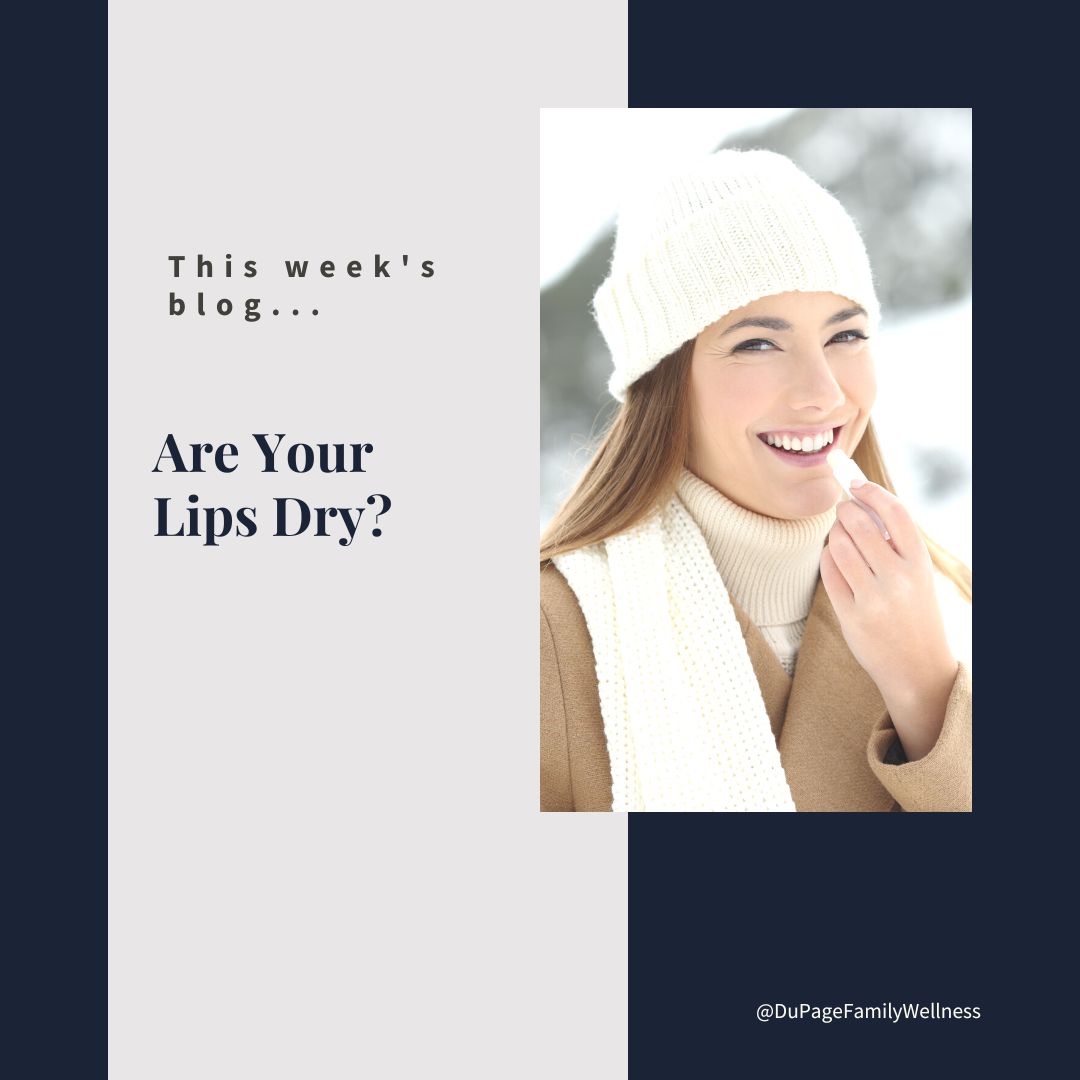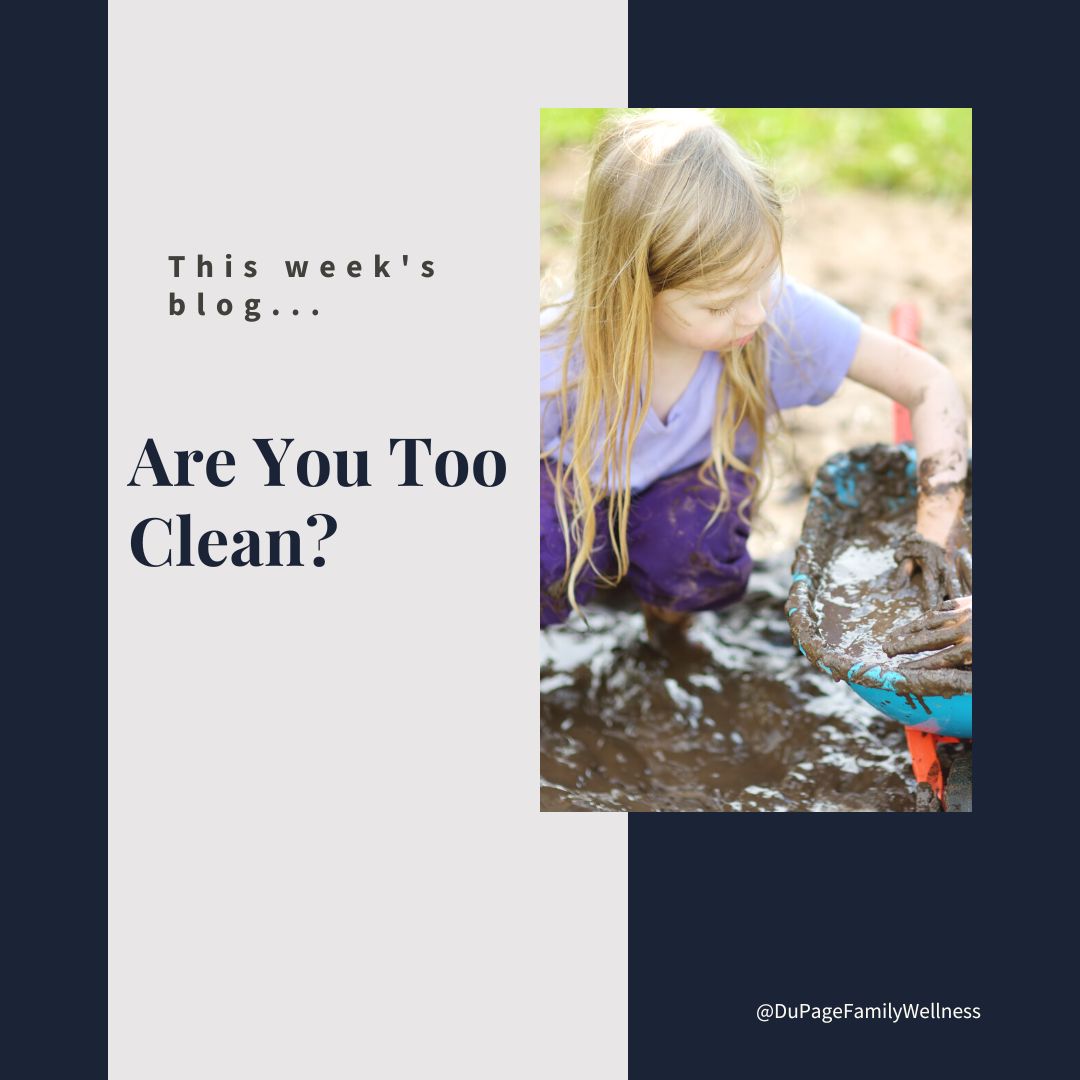 Winter can be one of the hardest parts of living in the Midwest. The cold temperatures and wind make staying warm a challenge. It is helpful to bundle up, but we generally don’t cover our faces. This can leave our lips chapped, cracked, or even bleeding.
Winter can be one of the hardest parts of living in the Midwest. The cold temperatures and wind make staying warm a challenge. It is helpful to bundle up, but we generally don’t cover our faces. This can leave our lips chapped, cracked, or even bleeding.
Since the lips have some of the highest concentrations of receptor cells in the body, it can be especially painful. Many people are drawn to chapstick to relieve the discomfort, while others prefer to avoid using lip balm.
When we understand and address the underlying factors, we can often resolve the issue with some simple changes. Most cases can be handled inexpensively at home without any medical care.
Let’s look at the factors that contribute to dry lips and what we can do about it.
Dehydration
It is pretty clear that chapped lips are a result of not having enough moisture, but why are lips so vulnerable? Dermatologist Ife Rodney explains that “because of the quick turnover of skin cells on the lips, you’re more prone to dryness if you aren’t properly hydrated.”
It makes sense that staying hydrated would have a major impact, but it can be difficult to stay hydrated just by drinking enough water. Getting enough minerals with your water is crucial to keeping your body fully hydrated. It is one of the reasons that I rarely drink plain water.
If you need to work on your hydration, check out the following blogs...
Environment
A dry environment can contribute to chapped lips. Using a humidifier can help provide moisture in the air to combat this problem, but it is important to do it in a way that doesn’t cause other problems.
Cool mist humidifiers safely provide moisture in your air provided you follow the manufacturer’s directions. It is important to use fresh water, wipe up any spills, and clean the humidifier regularly to prevent any bacteria or mold growth.
It is also crucial to make sure the humidity in the air stays between 30-50%. Mold can begin growing in the environment if it gets above these levels and presents a significant risk to your health.
If you need a good humidifier, check out the following options…
Lip Balm
According to dermatologist Dr. Rogers a lot of lip care products contain irritating ingredients. She explains that “while they may temporarily soothe your lips, they can ultimately cause so much irritation and dryness that it creates the need to reapply the lip balm frequently.”
The American Academy of Dermatology recommends avoiding ingredients such as fragrances, flavorings, salicylic acid, and lanolin as they exacerbate dryness. Instead, choose ones that contain ceramides, hemp seed oil, dimethicone, mineral oil, and shea butter.
The key, according to dermatologist Dr. Awan, is to get lip balm that attracts and seals in moisture. He encourages people to avoid lip care products that contain ingredients that give a cooling or tingling effect such as peppermint, camphor, and menthol. These irritants likely explain why people get addicted to it.
If you want to try a very different type of lip balm, check out the link below. Instead of the typical fruity flavor, it tastes more like a pot roast!
Other Factors
In addition to lip balm, anything that comes in direct contact with your lips can impact their moisture. It’s easy to believe that spicy and salty foods tend to have a drying effect, but did you know your saliva can irritate them too?
Read more ...
 Over 25% of adults in America self-report having seasonal allergies. Additionally, over ten percent have a positive antinuclear antibody (ANA) which is an indicator of autoimmune disease. These concerning numbers only seem to be growing.
Over 25% of adults in America self-report having seasonal allergies. Additionally, over ten percent have a positive antinuclear antibody (ANA) which is an indicator of autoimmune disease. These concerning numbers only seem to be growing.
Both disorders are caused by an immune system that is malfunctioning. Allergies are an immune response that confuses a harmless substance with a dangerous one. Autoimmune diseases occur when an overactive immune system creates antibodies that attack the body.
Why are cases of seasonal allergies and autoimmune diseases growing? Is there something in our modern world that leads to their development? What can we do about it?
It is a complicated topic with lots of nuances, so be sure to read to the end where application steps will be suggested.
Hygiene Hypothesis
One theory is called the “hygiene hypothesis.” It was originally based on a study in Britain where immunologist David Strachan found a lower prevalence of hay fever in children being raised in large families than those in small ones. He concluded that the germs they were exposed to from older siblings at an early age increased the effectiveness of their immune system protecting them from allergies.
In 1968, Kiviloog L. Irnell studied the difference in asthma rates between those living in rural areas and those living in urban areas in Sweden. He found the prevalence of asthma was lower for those living in rural areas (1). Similar results were found when comparing native tribes living traditionally in rural areas of Canada and Caucasian Canadians in urban areas. It was found that the native population had a lower frequency of allergies and a higher prevalence of helminth infestation (2).
One especially interesting study looked at those in Eastern and Western Germany after the “Fall of the Iron Curtain.” Researchers thought the increased pollution in Eastern Germany would result in more cases of allergies. Surprisingly they found the opposite. Better sanitation and hygiene were “positively associated with atopic diseases (3)".
Many scientists interpret these findings to indicate that there is a benefit of increased exposure to microorganisms. They believe the diversity in gut flora and helminth parasites that are a result of this exposure, act as protective agents. Please know that this does not mean we should stop valuing cleanliness or intentionally expose ourselves to illness. Keep reading to understand the practical steps that you can take to apply this knowledge responsibly.
The Value of Microorganisms
In the case of allergies, the immune system over-responds to harmless substances like certain foods and environmental substances. With autoimmunity, the body begins to attack its own cells resulting in diseases such as diabetes, rheumatoid arthritis, psoriasis, multiple sclerosis, lupus, celiac, and Hashimoto disease.
Some scientists believe that since our bodies evolved with the presence of microorganisms, they are used to processing them. Scientist Graham Rook calls these microorganisms “Old Friends." With lower levels of microorganisms in the body, the immune system does not have enough to do and overreacts. Other scientists believe that these early exposures simply train the immune system not to overreact. Either way, preventing the immune system from responding excessively will lead to better outcomes.
Read more ...
 Valentine’s Day is promoted as a day to celebrate romance. While it is great to enjoy that type of relationship if you have one, other connections are just as important. They are worth celebrating too.
Valentine’s Day is promoted as a day to celebrate romance. While it is great to enjoy that type of relationship if you have one, other connections are just as important. They are worth celebrating too.
Connecting with people, connecting with nature, and connecting with yourself are key factors in a healthy life. Spending time investing in these connections will increase your overall wellness and enjoyment of life.
The benefits go past the emotional level; these connections affect your physical health as well. Once you realize the impact they make, you will want to be intentional about devoting time to them each week.
Let’s explore some of these connections and expand our view of Valentine’s Day to more than just romantic love.
Connecting with Others
The American Association for the Advancement of Science published a study that found “a lack of social connection is a greater detriment to health than obesity, smoking, and high blood pressure.” Positive connection, on the other hand, improves your immune system and leads to a 50% increased chance of longevity.
So, what is social connection and how do we cultivate it? Author and researcher Brene Brown defines connection “as the energy that exists between people when they feel seen, heard, and valued; when they can give and receive without judgment; and when they derive sustenance and strength from the relationship.”
The first step to developing this type of relationship is to find people that you would like a deeper relationship with. Look for people that you share common interests with and see regularly. If you don’t already have people like this in your life, try finding some through community groups (meetup groups, book clubs, local schools, spiritual communities, etc.)
It takes time to establish deep friendships, but here are some ways to increase the likelihood of developing them with the people in your life…
Make time for important people in your life
- connect around the dinner table a few times a week
- invite friends to go out for coffee
- have a game night at your house
- hang out in the evening with the people you live with
- call a family member
- text an old friend
Do an activity together
- go for a walk
- enjoy a round of golf
- do some shopping
- head to the bowling ally
- challenge yourselves to a room escape
Encourage Depth
- express your love in words
- use the power of friendly touch
- make room for laughter
- be attentive to their needs
- ask them what they think and how they feel
- truly listen to get to know them without an agenda
- share the deeper parts of your heart with them
*Put your cell phone away when you are connecting with others in person. (Research has found that the mere presence of a cell phone interferes with connection.)
Connecting with Yourself
You can not deeply connect with others if you are not connected to yourself. Knowing who you are and what you value is the foundation on which all other relationships are built. It is an important first step that can help you discern what relationships you want to invest in. It also allows you to show up in these relationships in an authentic way, making the relationship richer for both parties.
Read more ...
 It is a time to celebrate love, but it doesn’t have to be the romantic kind. Whatever your relationship status, you deserve to have a great Valentine's Day.
It is a time to celebrate love, but it doesn’t have to be the romantic kind. Whatever your relationship status, you deserve to have a great Valentine's Day.
In recent years, the popularity of “Galentine’s Day” makes it easier to focus on the relationships that you do have. There has also been a push to love yourself and recognize the need for self-care.
Here are some fun treats whether you are celebrating yourself, your friends, or your significant other.
Yummy Treats
Coconut fat bombs are delicious sweet treats without all the sugar and processed ingredients found in most boxed chocolates! My sister, Joelle, introduced me to them years ago. I love them!
Ingredients:
- 2½ c. unsweetened shredded coconut
- 1 t. vanilla
- ⅛ t. cinnamon
- 1 pinch of nutmeg
- ½ c. coconut oil (melted)
- 2 T. cocoa powder (optional)
- almonds, walnuts, or other nuts of choice
Directions:
- Blend the unsweetened shredded coconut in a food processor with the vanilla, cinnamon, and nutmeg.
- When it starts to form a butter, pour in the melted coconut oil. Continue to blend until smooth.
- Put half the mixture into silicone molds.
- Mix 2 tbsp of cocoa powder in the remaining half (this is for the chocolate ones)
- Pour this mixture into another set of molds.
- If you would like to add some nuts to either mixture, it can be a nice touch.
- Throw them in the fridge and let them harden up
- Enjoy!
*This recipe was adapted from the RESTART Cookbook by Jeni Hall, NTP. You can also find great recipes on Joelle's blog From Scratch Farmstead.
Gifts Ideas
We want those we celebrate (including yourself) to feel special. Sometimes this includes getting a gift for someone hard to shop for. In that case, an experience is a great alternative to a traditional present. Consider getting them a/an…
- ticket to a sporting event
- manicure/pedicure
- foot, back, or full-body massage
- ticket to a show at a local theater
- Spotify gift card
- store membership (Costo, Sam's Club, etc.)
- escape room experience
- ax throwing experience
- coupon for watching their kids
- coupon for making them dinner
- weekend away
- cooking class
- sip and paint night
- craft class (pottery, macramé, etc.)
- trip away through extra airline miles
- membership to the Morton Arboretum
Celebrations
If you are going out to dinner, be sure to get your reservations now! But, while eating out is a nice option, something creative might be even more special. Think about what your loved one(s) would enjoy the most.
- have an indoor picnic
- make coconut bombs (see recipe above)
- go cross-country skiing
- play in the snow
- watch a movie
- sit by the fire reading
- discuss some of these questions
- journal about one of these prompts
- have a game night
- do some art
- go stargazing
- take a class (cooking, painting, etc.)
- enjoy some physical activity (indoor rock climbing, pickleball, bowling, etc.)
- do a puzzle
- make a scavenger hunt
- go out dancing
- do karaoke
- see a theater production
- start a new tradition
*For more ideas check out Affordable Valentine's Day Ideas.
I hope these suggestions will encourage you to celebrate yourself as well as others this Valentine’s Day!
Dr. Jamie
*I earn a small commission on qualifying purchases as an Amazon Associate.
 If you want to improve your sleep and feel better during the day, an Oura Ring can be a great tool. Its advanced sensor technology provides personalized sleep and health insights based on the most reliable source - your body.
If you want to improve your sleep and feel better during the day, an Oura Ring can be a great tool. Its advanced sensor technology provides personalized sleep and health insights based on the most reliable source - your body.
The information that my Oura Ring provides, helps me identify things that impact my sleep. It not only shows me the specifics of my sleep quality but also leads me to understand the changes needed for a better night’s sleep.
I have been using this device for almost 3 years. I use the insights gained on a daily, weekly, and monthly basis to make sure that my body is feeling great and to improve my overall health.
When I listen to these findings and make adjustments to my life, I wake up feeling more rested. It results in more energy and mental clarity which sets me up for a better day. This helps me care for myself and others more effectively.
I chose the Oura Ring over other wearable devices because of its accuracy in sleep detection, but I also use it for paying attention to my movement and my basal body temperatures for fertility tracking.
Let’s take a brief look at why sleep is important. Then we will take a look at this technology and what insights it provides.
Why Sleep is Important
You might intuitively know that you feel better when you are well-rested. Sleep is crucial for mood, energy, and stress tolerance. It is difficult to concentrate and react quickly when you are groggy. The pathways in your brain that let you learn and create new memories are dependent on sleep.
Sleep is also essential for the basic repair of the body. This includes the neurological, endocrine, immune, musculoskeletal, and digestive systems. Studies suggest that sleep also plays a housekeeping role in removing the toxins in your brain that build up during waking hours.
For more on the importance of sleep and how to get the quality rest you need, check out our blogs…
Measuring Sleep Quality
The Oura ring uses advanced sensor technology to measure your resting heart rate, heart rate variability, temperature, and respiratory rate. Its associated app tracks this data and uses it to assign three simple scores that answer questions about your health.
- How ready are you for the day? - Your "readiness score" provides a picture of your overall health and can signal when your body is under strain. You can use this score to track how your daily habits affect your wellness and make any necessary changes.
- How well did you sleep last night? - Your "sleep score" shows the quality of your sleep by measuring the length of time you were in bed, how fast you fell asleep, how long you were in each stage, as well as how much you tossed and turned during the night. This information can help you see trends and show you how caffeine, exercise, or screens affect your sleep.
- How well are you balancing your activity and rest? - Your "activity score" shows if you were sedentary that day, but also helps you gauge if you got enough recovery time. It looks at your activity goals, training frequency, time spent exercising as well as the number of rest days.
Read more ...
 Did you know that there are hormone-disrupting chemicals that may predispose people to obesity? Would you believe these chemicals are common in our homes today?
Did you know that there are hormone-disrupting chemicals that may predispose people to obesity? Would you believe these chemicals are common in our homes today?
While most people think obesity is caused by consuming more calories than are burned, there is more to the story. Hormones play a large part in maintaining a healthy weight, so avoiding chemicals that interfere with them is key.
Even if you are not concerned about losing weight, do you really want chemicals messing with your hormones? For most of us, the answer is an emphatic no.
Let’s take a look at obesogens and how to avoid them. I promise not to get too technical on you!
What are Obesogens
Obesogens are chemicals that interfere with the endocrine system and disrupt regular hormone activity. This impacts your metabolism, energy levels, fat storage, as well as many other crucial functions of the body.
There are about a thousand of these chemicals used in commerce today. The most common are…
- Bisphenol-A (BPA)
- Phthalates
- Atrazine
- Organotins
- Perfluorooctanoic Acid (PFOA)
Where Obesogens Are Found
Most products have an ingredient list, but with a thousand endocrine-disrupting hormones used in manufacturing today, it is impossible to keep track of all of them.
The "Think Dirty - Shop Clean" app is designed to help you identify how products measure up. You simply type the name of your home or beauty product into the app, and it will give you a rating on how toxic the product is. For some products, you can even just scan the barcode.
The Environmental Working Group website is another great place to learn about toxins in water, food, and personal products. Try plugging in a few of your commonly used products to see their rating.
Some places you may want to watch out for are…
- Body products - shampoo, soap, perfume, makeup, nail polish, lotion
- Cleaning supplies - detergent, dryer sheets, air fresheners
- Food - processed food, seafood, microwaveable meals, food stored in plastic
- Drinks - canned drinks, tap water
- Household products - non-stick pans, plastic containers, stain-repellant
What to Do
It can be quite overwhelming to discover all the products that contain obesogens. We need to remember that there is no perfect way to handle this. If we try to limit all exposure, it will be next to impossible. Chances are the anxiety created from this attempt will be worse for your health than minimal exposure.
Do the best you can to make reasonable changes over time. You may need to get creative if cost is a factor; perhaps you can go to a thrift store or request the products you want for a gift.
Where to Begin
If you need a place to start, follow the suggestions below…
- Wash your hands - use a good hand soap to rinse off any residue of endocrine disruptors.
- Get rid of plastic - use glass or stainless steel containers (water bottles, food storage). Bring cloth bags when you shop, and focus on getting wooden or cotton toys.
- Replace nonstick cookware - opt for cast iron, ceramic, glass, or stainless steel.
- Eat real food - choose fresh meats and produce rather than food made in a factory.
- Purify your water - use a water filtering system, and store the water in glass jars.
- Clean your home - vacuum and dust frequently to reduce particles in the air. Use non-toxic products to clean your home.
If this information is overwhelming you, take a breath. We aren’t striving for perfection just to walk towards healing step-by-step.
Dr. Jamie
P.S. Ask me about the locally made, non-toxic products we carry from "A Dirty Hoe."
 Winter can be one of the hardest parts of living in the Midwest. The cold temperatures and wind make staying warm a challenge. It is helpful to bundle up, but we generally don’t cover our faces. This can leave our lips chapped, cracked, or even bleeding.
Winter can be one of the hardest parts of living in the Midwest. The cold temperatures and wind make staying warm a challenge. It is helpful to bundle up, but we generally don’t cover our faces. This can leave our lips chapped, cracked, or even bleeding. 

 Over 25% of adults in America self-report having seasonal allergies. Additionally, over ten percent have a positive antinuclear antibody (ANA) which is an indicator of autoimmune disease. These concerning numbers only seem to be growing.
Over 25% of adults in America self-report having seasonal allergies. Additionally, over ten percent have a positive antinuclear antibody (ANA) which is an indicator of autoimmune disease. These concerning numbers only seem to be growing. Valentine’s Day is promoted as a day to celebrate romance. While it is great to enjoy that type of relationship if you have one, other connections are just as important. They are worth celebrating too.
Valentine’s Day is promoted as a day to celebrate romance. While it is great to enjoy that type of relationship if you have one, other connections are just as important. They are worth celebrating too.  It is a time to celebrate love, but it doesn’t have to be the romantic kind. Whatever your relationship status, you deserve to have a great Valentine's Day.
It is a time to celebrate love, but it doesn’t have to be the romantic kind. Whatever your relationship status, you deserve to have a great Valentine's Day. If you want to improve your sleep and feel better during the day, an Oura Ring can be a great tool. Its advanced sensor technology provides personalized sleep and health insights based on the most reliable source - your body.
If you want to improve your sleep and feel better during the day, an Oura Ring can be a great tool. Its advanced sensor technology provides personalized sleep and health insights based on the most reliable source - your body.  Did you know that there are hormone-disrupting chemicals that may predispose people to obesity? Would you believe these chemicals are common in our homes today?
Did you know that there are hormone-disrupting chemicals that may predispose people to obesity? Would you believe these chemicals are common in our homes today?